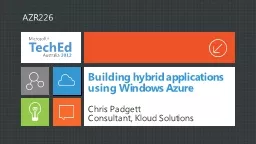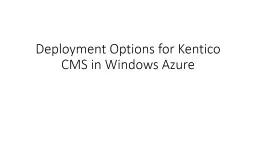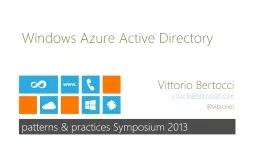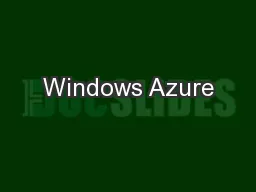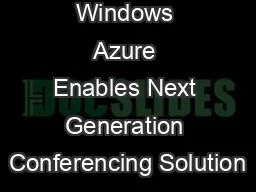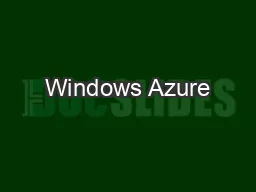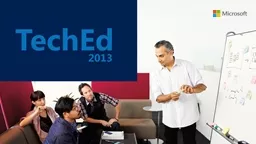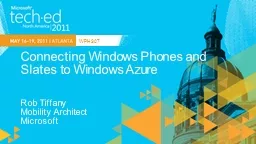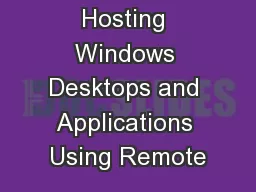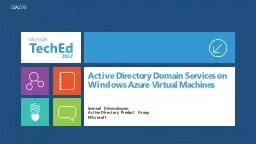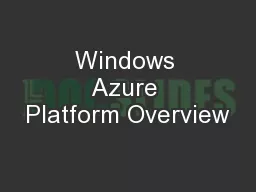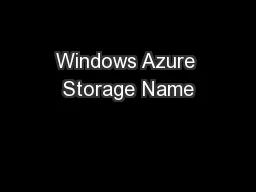PPT-Building hybrid applications using Windows Azure
Author : luanne-stotts | Published Date : 2016-07-24
Chris Padgett Consultant Kloud Solutions AZR226 Introduction Hybrid applications Benefits Challenges Windows Azure SQL Data Sync Service Bus Connect Access Control
Presentation Embed Code
Download Presentation
Download Presentation The PPT/PDF document "Building hybrid applications using Windo..." is the property of its rightful owner. Permission is granted to download and print the materials on this website for personal, non-commercial use only, and to display it on your personal computer provided you do not modify the materials and that you retain all copyright notices contained in the materials. By downloading content from our website, you accept the terms of this agreement.
Building hybrid applications using Windows Azure: Transcript
Download Rules Of Document
"Building hybrid applications using Windows Azure"The content belongs to its owner. You may download and print it for personal use, without modification, and keep all copyright notices. By downloading, you agree to these terms.
Related Documents

